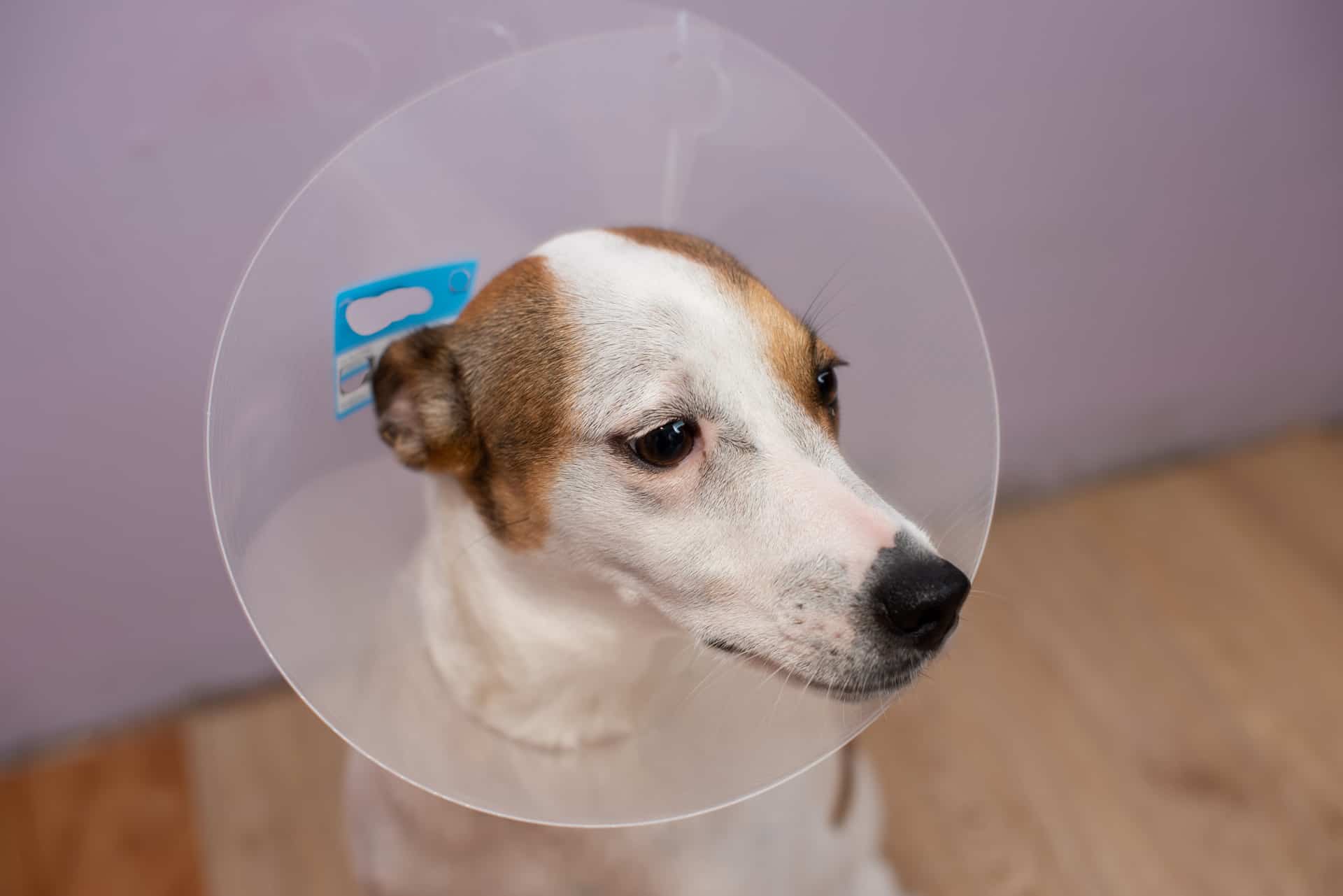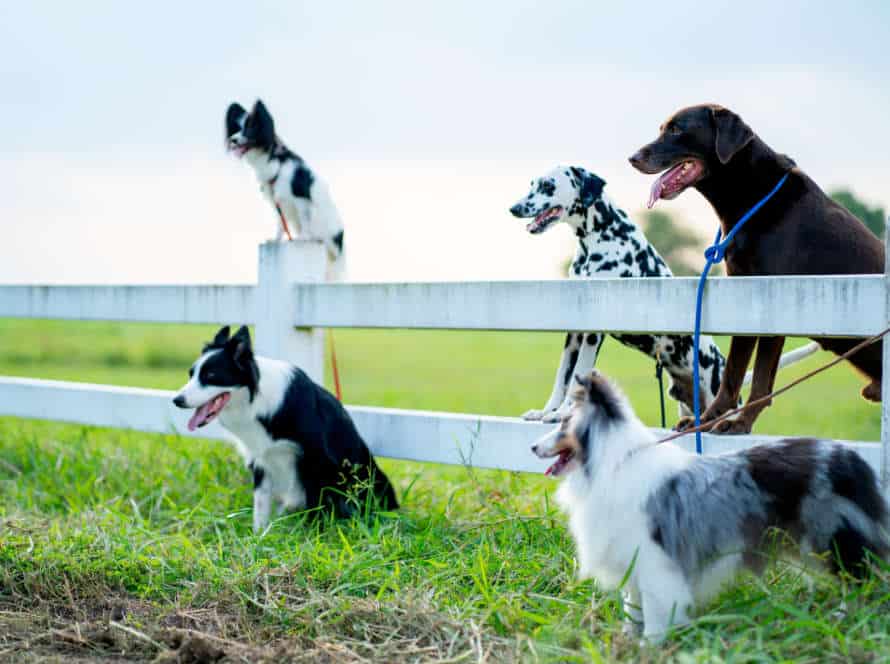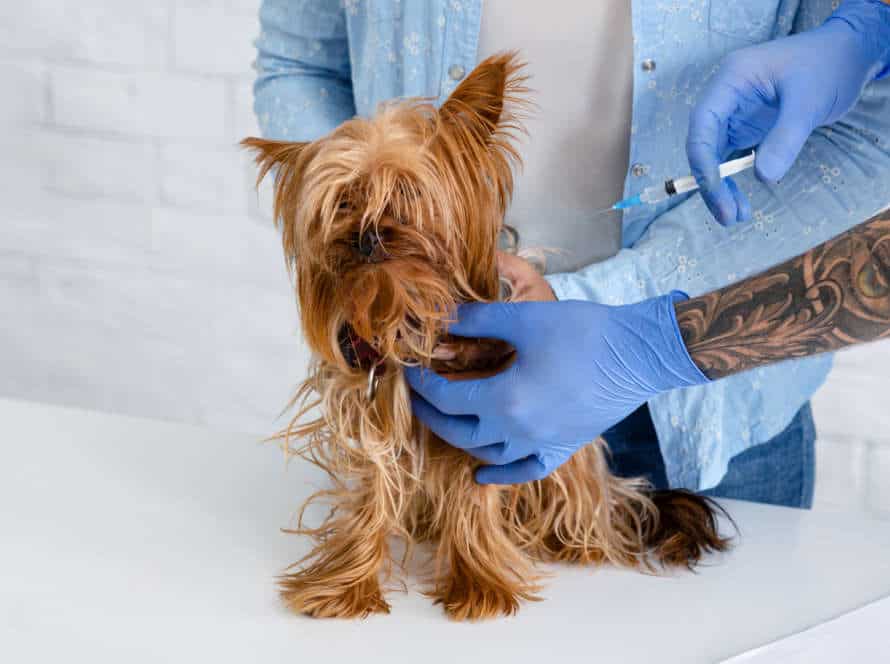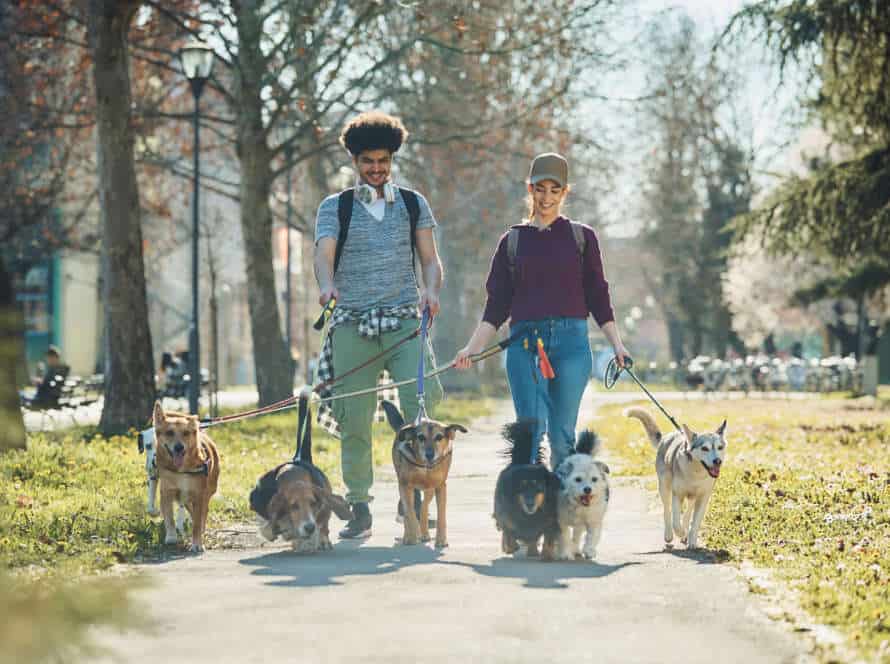How Spaying and Neutering Affects Dog Training
Spaying and neutering your dog can have both pros and cons.
It can reduce hormones that cause dominant and aggressive behavior, making training easier.
But it can also decrease energy levels, making training harder.
And, it can lead to increased appetite and weight gain.
Before making a decision, consider the effects on behavior and health.
The Basics of Spaying and Neutering
Spaying and neutering are common practices. They involve removing a pet’s reproductive organs. This decreases the pet population and reduces aggressive behavior. It can also have an effect on your pet’s behavior and training. So, it’s important to know why these procedures are done and what the effects may be. Here are the basics of spaying and neutering:
The spaying process and its effects on dogs
Spaying is a surgical process where a female dog’s reproductive organs are removed. Neutering is the removal of a male dog’s testicles.
Spaying has several effects. It can decrease aggressive/territorial behavior. It may reduce certain health issues. It could also cause weight gain.
For training, spaying can make a dog more responsive. It can reduce the urge to roam, mark their territory, and act aggressively. Spaying can help prevent certain health problems like breast cancer and uterine infections. It is recommended to spay or neuter your dog at a young age for the best benefits for their behavior and health.
The neutering process and its effects on dogs
Neutering is the act of surgically removing a male dog’s testicles. This has effects on the pup both physically and behaviorally.
Physical Effects:
- Neutering reduces the risk for cancer, such as testicular, prostate, and perianal gland tumors.
- It also decreases the chances of urinary tract infections and hernias.
Behavioral Effects:
- Neutered male dogs are less prone to unwanted behaviors, like urine marking, roaming, and aggression towards other males.
- They may even be more agreeable and easier to train.
Pro Tip: Speak with your vet before neutering your pup. Make an informed decision!
Benefits and drawbacks of spaying and neutering dogs
Spaying and neutering are routine procedures done on dogs. They can help prevent breeding and manage behavioral issues, as well as improve the dog’s health. Though there are advantages, there are also drawbacks to consider.
Benefits:
- Lower risk of reproductive tumors and infections.
- Can help with aggression, roaming, and marking territory.
- Help control the unwanted pet population.
Drawbacks:
- Irreversible.
- May affect learning and retaining new behaviors.
- Increased appetite and decreased metabolism, which can lead to obesity.
- The surgery can have risks and complications.
Pro tip: Talk to a vet to find out if spaying or neutering is right for your dog’s age, breed, and health. Also to discover how it could affect training efforts.
How Spaying and Neutering Affects Dog Training
Spaying and neutering can offer many advantages for your pup – especially in terms of health and behaviour. But what about training? Can it really help? Yes! Here’s how spaying and neutering can make training a dog more successful and enjoyable. Let’s find out!
What are the behavioral changes after spaying or neutering a dog?
Spaying or neutering a pup can cause changes to their behavior. That’s because their hormones and body chemistry change, which can affect their mood and energy.
Here are some common changes you may see:
- Increased food consumption and weight gain.
- Decreased energy and activity.
- Less aggression and territoriality.
- More affection and socialization with other pets.
To deal with these changes, you may need to modify your pup’s training. This includes altering their diet, changing the exercise intensity, and using different training methods.
Pro tip: Ask your vet and dog trainer for specific guidance and support on how to train a spayed or neutered pup.
Can dog training improve after spaying or neutering?
Spaying and neutering may affect dog training. But, effects vary from pooch to pooch. Here are some common changes:
- Decreased aggression – Hormones out of the picture can make it easier to train with positive reinforcement.
- More appetite & less energy – Adjust diet & exercise to keep fit & healthy.
- More attention-seeking – Females may be more loving, while males may not enjoy fetch as much.
It’s vital to note that these changes may be temporary or permanent, depending on the pup’s breed, personality, and age at surgery. Training may take longer, but with patience, consistency, & positive reinforcement, any dog can be trained.
Are spayed or neutered dogs easier to train than unaltered dogs?
Spaying and neutering can affect dog training, but it’s not the only factor. Neutered or spayed dogs may face fewer issues related to hormones, but there are other aspects to keep in mind. Here are some:
- Age: Younger dogs are easier to train. Start when you bring them home, spayed or not.
- Breed: Different breeds have different temperaments, making some easier or harder to teach.
- Positive reinforcement: Rewarding and praising good behavior works best, no matter the reproductive status.
So, spaying or neutering is just one part of training. A trained and socialized pup is a happy one, no matter what.
Socializing Spayed and Neutered Dogs
Spaying and neutering your pup has plenty of advantages. It keeps them safe and on their best behavior. Also, it can help cut down on barking and aggression. But, it is important to know that spaying and neutering will likely have an effect on your pup’s training. Let us delve deeper into the effects of spaying and neutering on your dog’s learning and obedience.
The importance of socialization
Dogs need socialization! This is especially true for spayed and neutered dogs, whose behavior can be changed by the procedure. Without socialization, these pups may end up anxious or aggressive.
Socialization teaches them to interact with humans and other animals in a safe and enjoyable way. Here are some of the awesome benefits:
- Improved behavior: Socialization reduces anxiety and aggression, making doggos more obedient and easier to train.
- Greater joy: Socialization gives them mental stimulation and allows them to feel like they belong.
If you have a spayed or neutered pup, make sure to give them lots of chances to mingle with other pooches and people in a secure environment.
How to socialize spayed and neutered dogs
Spaying and neutering your pup can have a big influence on their character and temperament. Here are some tips for socializing spayed and neutered dogs:
- Get an early jump on it: socialization should begin when the dog is just a pup, between 3 weeks and 14 weeks old.
- Cut back on physical activity: after the spaying or neutering surgery, your pup may need to restrict their activity for a few days to a few weeks, depending on their age and general health.
- Reward good behavior: use positive reinforcement techniques, like treats and compliments, to promote good behavior and socialization.
- Introduce in stages: slowly expose your pup to different people, other dogs, and other environments to help them build self-assurance and lessen fear or anxiety.
- Stay consistent: socialization should be steady and ongoing, as pups need regular contact with new experiences and people to keep up their development.
Spaying and neutering can help avert unwanted behaviors and health problems, but it is essential to socialize your pooch properly to make sure they are a cheerful and well-rounded companion.
The role of dog training in socialization
Training dogs is essential for socializing them after they have been spayed or neutered. Changes in behavior can occur after the procedure, from a reduction in male aggression to an increase in anxiety in females. To adapt to these changes, and to keep up good behavior, training is key.
Here are 3 techniques to help socialize your dog:
- Positive reinforcement: Use treats, toys, or words to reward good behavior.
- Desensitization: Gradually introduce your dog to new things like other dogs, people, and loud noises, to help reduce any fear or anxiety.
- Counter-conditioning: Help your dog associate positive experiences with things that used to cause fear or anxiety.
These techniques can help your spayed or neutered dog feel more confident and maintain their good behavior.
Addressing Behavioral Problems after Spaying or Neutering
Spaying and neutering pets is a frequent practice. It can, however, alter your pup’s behavior during training and obedience. It’s essential to be mindful of the repercussions and how to manage potential behavioral issues. So, let’s explore how spaying and neutering impacts a dog’s behavior and training.
The common behavioral changes that occur after spaying or neutering
Getting your pup spayed/neutered may cause certain changes in behaviour. The most widespread ones are:
- Less Aggressive: Neutering results in less aggressive behaviour towards humans and other dogs.
- Increased Calmness & Docility: Spaying a female pup makes her more docile, which leads to an increase in her calmness & reduction in activity.
- Better Social Attitude: Neutering may help improve a dog’s social manners, making them friendlier & less territorial.
- Reduced Roaming: Spaying can lower a female’s desire to roam in search of a mate, thus reducing the chances of her running away from home.
Remember though, spaying/neutering is not a magical fix for all behaviour issues. Training, exercise & socialisation are essential for proper behaviour.
Dog training techniques to address these behavioral changes
Neutering and spaying can have an effect on your pup’s behaviour – and that’ll affect their training. Here are some tips for training after the op:
- Repeat! It’ll take time for your pup to adjust to the changes – so repetition of their training is crucial.
- Positive reinforcement! Give your pup treats and love when they do something good. That’ll encourage them to repeat the behaviour.
- Be consistent! Routines are great – so be consistent with your praise, tone and body language.
- Patience! It may take weeks, or even months, for your pup to settle in. Be patient and keep a good attitude – that’ll make all the difference.
Every dog is different, so tailor your training methods to suit any changes after the op.
Pro tip: Seek advice from a professional – they know best!
Behavioral changes that require the help of a professional trainer
Spaying or neutering a pup can lead to behavior changes. To manage these, a professional trainer might be needed. Here are some common changes to expect:
- Reduced aggression. This procedure may cut down your doggy’s aggression towards other animals or people.
- Anxiousness. Hormone changes can make your pup more anxious or stressed.
- Less energy. Spayed or neutered dogs may have less energy, which affects their exercise and training needs.
A specialist can help you identify the changes and come up with solutions. For example, positive reinforcement techniques, training exercises and socialization activities.
Pro tip: Give your spayed or neutered pup lots of exercise, socialization and mental stimulation to help them adjust.
Myth-Busting About Spaying and Neutering Effects on Training
Spaying and neutering are widely used to manage animal populations and lighten the load on shelters. But, many people have false ideas and misconceptions about what spaying and neutering will do to their pup’s behavior and training. Here, we’ll look at some facts and bust some myths about spaying and neutering and its impact on a dog’s training.
Common myths and misconceptions about spaying and neutering
Myths and misconceptions about spaying and neutering dogs can be confusing. But, here are the facts!
Myth #1: Spaying and neutering will make your dog less trainable?
Not true. In fact, it can help make them more trainable by reducing their urge to roam and mark territory.
Myth #2: Will it cause your dog to gain weight?
It can, if they don’t get enough exercise and have an unhealthy diet. But, this is up to the owner to monitor.
Myth #3: Will it change their personality?
No, it won’t. In fact, it can reduce aggression and anxiety levels.
So, spaying and neutering can actually improve your dog’s behavior and health without affecting their ability to learn.
Science-based evidence on the effects of spaying and neutering on dog training
No science shows spaying/neutering affects a dog’s training. In fact, some say it may help. Consider these when training a spayed/neutered pup:
- Hormones post-surgery can reduce behaviors that hinder training, like aggression and anxiety.
- Use positive reinforcement and consistency when training.
- Socialization and new experiences are important for all dogs, no matter if spayed/neutered or not.
Spaying/neutering your dog has multiple health and behavior perks, and should not be a factor in deciding to train them.
How to make an informed decision about spaying or neutering your dog.
Should you spay or neuter your dog? It’s important to know how it affects their training.
Myth: It’ll have a bad effect on their training and make them less obedient.
Fact: It can actually help training, as it decreases bad behaviors like marking or aggression.
Myth: They’ll get lazy and gain weight.
Fact: Metabolism may slow down and their appetite may increase, but proper diet and exercise can prevent this.
The decision is up to you, but make sure you know the facts first. Ask your vet what’s best for your pet.
Frequently Asked Questions
1. Q: Will spaying/neutering affect my dog’s ability to learn new commands?
A: No, spaying/neutering will not directly affect your dog’s ability to learn new commands. However, it may affect their energy level or focus, which could indirectly impact their training.
2. Q: Can spayed/neutered dogs still be aggressive?
A: Yes, spaying/neutering will not guarantee that your dog will not display aggressive behavior. Training and socialization are key components in preventing aggression.
3. Q: Is it better to train a dog before or after spaying/neutering?
A: It is recommended to train your dog before spaying/neutering to establish a strong foundation for obedience commands. However, training after spaying/neutering can still be effective.
4. Q: Will spaying/neutering make my dog less active?
A: It may, as spayed/neutered dogs tend to have lower levels of testosterone and estrogen. However, proper exercise and nutrition can help maintain your dog’s activity level.
5. Q: Can spaying/neutering cause hyperactivity in dogs?
A: No, spaying/neutering will not directly cause hyperactivity in dogs. However, some dogs may become more active due to the sudden decrease in hormone levels.
6. Q: Are spayed/neutered dogs easier to train?
A: In some cases, spayed/neutered dogs may be easier to train due to their decreased levels of hormones that can cause distraction or aggression. However, each dog is unique and training success depends on individual temperament and behavior.







